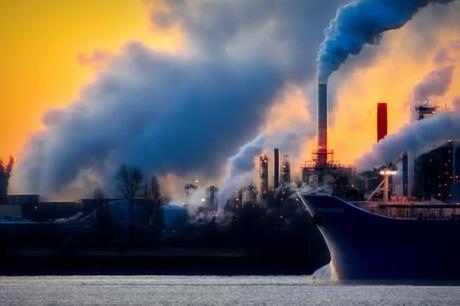The last three million years of carbon dioxide in the atmosphere was not as high as now. A study published in Science Advances Wednesday reinforced this conclusion. Researchers at the Potsdam Institute for Climate Impact Research and the Max Planck Institute for Meteorology in Hamburg, Germany became successful first time making a computer simulation of the climate over the last three million years matching data collected out of the sediment from the ocean floor.
As per the model, during that period carbon-dioxide levels played a significant role in shaping climate but are opposite to their impact today. At the beginning of ice ages, lower greenhouse gas levels were a major factor.

“We know from the analysis of sediments on the bottom of our seas about past ocean temperatures and ice volumes, but so far the role of CO2 changes in shaping the glacial cycles has not been fully understood,” Matteo Willeit , the lead study author of the Potsdam Institute for Climate Impact Research said in a press release. “It is a breakthrough that we can now show in computer simulations that changes in CO2 levels were a main driver of the ice ages.”
However, the implications are shocking of this possible scientific breakthrough. The global temperatures were never more than two degrees Celsius above pre-industrial levels during the modeled period in the simulation. Unless humans reduce burning fossil fuels than at current rates, temperatures will soon cross the marker in 50 years, and that is also with vital consequences.
“Our results imply a strong sensitivity of the Earth system to relatively small variations in atmospheric CO2,” Willeit said. “As fascinating as this is, it is also worrying.”
According to the models, carbon dioxide levels could have been restricted to 280 parts per million (ppm) today rather than being at around 410 ppm at present if human activities did not intervene the natural climate cycles, Willeit told CNN and added that if this trend continues “our planet will change.” The sea level could rise to one to two meters (approx 3.3 to 6.6 feet) in the next 200 years.
On the day of the release of the Science Advances study, scientists gathered at the Royal Meteorological Society in London for discussion on what the earth was like the last time with much higher carbon dioxide levels.
During the Pliocene epoch, around 5.3 to 2.6 million years ago, temperatures recorded were about three to four degrees Celsius warmer leading to the growth of beech trees in Antarctica, with sea levels remaining at 20 meters (approx. 65.6 feet) high.
The study of the past era could be a help for humans to understand what the planet would look like in case climate change continues swiftly as per the scientists, The Guardian reported. However, scientists noted that it would be time-consuming for current C02 levels to cause these changes. For example, the Greenland and West Antarctic ice sheets could take millennia to melt completely.
“If you put your oven on at home and set it to 200C the temperature does not get to that immediately, it takes a bit of time, and it is the same with climate,” Martin Siegert, the geophysicist at Imperial College London said, as per The Guardian.
Jane Francis, the director of the British Antarctic Survey, mentioned the fossils of the Antarctic beech trees as a remarkable find.
“I call them the last forests of Antarctica. They were growing at 400ppm CO2, so this may be where we are going back to, with ice sheets melting at times, which may allow plants to colonize again,” Francis said, as reported by The Guardian. The Polar Regions were uniquely sensitive toward climate change; therefore those were vital to understanding it, Francis explained.
However, the changes were evitable as represented by the Pliocene, Siegert said.
“Can we restrict temperature rise to 1.5 degrees this century? Can we do that? It’s possible,” he said, according to BBC News. “We’ve got to bring CO2 levels down to 40% of what they are today by 2030, or so. And then to zero by 2050, and then negative after that. That’s a massive undertaking but it’s possible.”

